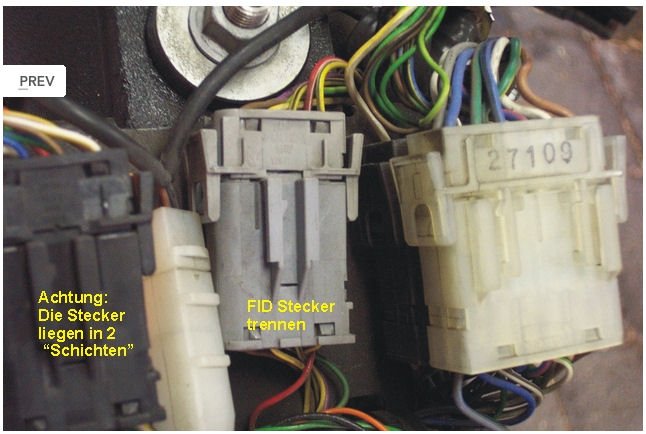Gang; I've got a gremlin somewhere in my '01 1150GS with 103K on it. After my original RID "froze" at about 90K miles, I replaced it with a used unit from Re-psycle. It failed within several months. Thinking it was "bad" when I got it, I bought a new one from Bob's BMW and had them install it.
After several thousand miles IT failed! It also "froze" (temp gauge, gas gauge, gear indicator and clock displayed but wouldn't change their read-out). To complicate things, it stayed "on" even when the bike was shut off. My most recent visit to Bob's and my favorite Master Certified Tech could not isolate the cause of the problem. All connections/wires running to the unit were checked for shorts/continuity but nothing was found. Wire harness was wiggled/giggled thinking maybe there was a short somewhere but that revealed nothing either. Disconnecting it and "plugging" it back in worked, and it has continued to work for 24 hours without another failure. But again, they were unable to find the cause and they were also unable to cause it to fail once they got it working again.
In closing, the mechanic tells me he has never seen this repetitive failure on any GS RID before. While I certainly want to have an RID that works, it could cause a problem if/when I travel and don't have access to a charger. If it freezes "on" in that scenario, it will run the battery down.
Have any of you heard of this happening before? Anyone have any suggestions as to a likely cause? I thank all of you in advance and thanks for putting up with a long post from a noob.
Best to all,
Doug
After several thousand miles IT failed! It also "froze" (temp gauge, gas gauge, gear indicator and clock displayed but wouldn't change their read-out). To complicate things, it stayed "on" even when the bike was shut off. My most recent visit to Bob's and my favorite Master Certified Tech could not isolate the cause of the problem. All connections/wires running to the unit were checked for shorts/continuity but nothing was found. Wire harness was wiggled/giggled thinking maybe there was a short somewhere but that revealed nothing either. Disconnecting it and "plugging" it back in worked, and it has continued to work for 24 hours without another failure. But again, they were unable to find the cause and they were also unable to cause it to fail once they got it working again.
In closing, the mechanic tells me he has never seen this repetitive failure on any GS RID before. While I certainly want to have an RID that works, it could cause a problem if/when I travel and don't have access to a charger. If it freezes "on" in that scenario, it will run the battery down.
Have any of you heard of this happening before? Anyone have any suggestions as to a likely cause? I thank all of you in advance and thanks for putting up with a long post from a noob.
Best to all,
Doug

